Andrew Goldberg | His Dreams Continue as His Legacy

Dr. Andrew Goldberg’s interest in medicine began when he contracted poliomyelitis as a young child and witnessed the death of a classmate while in the hospital. He graduated high school at 16 and, while attending Clark University, became drawn to academic medicine. After completing his internship, Dr. Goldberg served two years in the U.S. Coast Guard. He traveled to the North Pole as a physician aboard an icebreaker, an experience that stoked his sense of adventure, love for travel, and commitment to medicine.
During his residency, Dr. Goldberg married his wife, Gail, and a year later moved across the country to Seattle to pursue a fellowship in endocrinology, metabolism, and gerontology under Dr. Edwin Bierman. Afterward, he was appointed assistant professor at Washington University School of Medicine. In 1983, Andrew, Gail, and their sons, Ethan and Justin, returned to the East Coast, where Dr. Goldberg served as director of research in the Division of Geriatric Medicine at Johns Hopkins University for seven years. Following, he worked at the University of Maryland, where, at the pinnacle of his career, he founded and led the Baltimore VA Geriatrics Research Education and Clinical Center. A prolific researcher and a champion for wellness and dignity in aging throughout his career, Dr. Goldberg was tireless in his search for better health outcomes for all, especially older adults. His work investigated such topics as exercise and weight loss, obesity, type 2 diabetes, metabolism, and the rehabilitation of patients following a stroke or complications of cardiovascular disease. He authored over 200 journal articles, served on numerous committees and editorial boards, and was recognized with awards from the American Diabetes Association® (ADA), among many others.
Dr. Goldberg was also a passionate teacher and deeply committed to mentoring the next generation of clinical researchers. Even after his diagnosis of metastatic pancreatic cancer in early 2022, he routinely called colleagues and former students to offer support and inquire as to the progress of their research. He took great pride in opening doors for others and advocated for patients, students, and peers alike—no matter the cost. His global network in the field of geriatric medicine was like an extended family. His own family was also a great source of pride.
Dr. Goldberg was an enthusiastic booster at his young sons’ little league games and wrestling matches, beamed at their graduations and award ceremonies, and delivered heartfelt toasts at both their weddings. He doted on his five grandchildren, teaching them to play gin rummy and encouraging them to take up tennis, which he adored. Together with Gail, he traveled widely, hiked, kayaked, took thousands of photographs, and enjoyed the cuisines and wines of the world. It has been almost a year since the passing of this wonderful man, but his legacy will live on. Among his last wishes was that he be remembered through gifts to the American Diabetes Association. Gail, Ethan, and Justin have taken this wish further, with the establishment of a named award through the ADA Scholars Program, which will be presented for the first time at the 84th Scientific Sessions in June 2024. The world will continue to benefit from the generosity and devotion of Dr. Andrew Goldberg.
Alan Altschuler | Sharing My Story to Help Others

I was diagnosed with type 1 diabetes (then called juvenile diabetes), 55 years ago during my final exams of my final semester before graduating from Cornell University. Back then, I knew nothing about diabetes and believed it was a death sentence. Like so many, I was afraid to take shots of insulin, and, for the first couple of years, I was hesitant to even talk about diabetes, embarrassed to reveal my “weakness”.
So much progress has been made in diabetes care and treatment since then that I barely know where to start. I've moved from one shot a day using the now long-extinct Protamine Zinc insulin, through generations of new insulins, moving to an insulin pump in 2003, and now to the hybrid combination of the Dexcom CGM (continuous glucose monitor) and Tandem t:slim X2 pump. And, of course, we've moved from urine dipsticks to blood sugar (blood glucose) finger sticks to CGMs. During these years, my A1C has gone from the highs 7s (probably much higher before A1Cs were available) to my latest record—5.4%!
As the years passed, I decided to be open about having diabetes and to help others struggling to take control. In 1980, the American Diabetes Association® (ADA) welcomed me as a volunteer at the local office in New York City. This work continued until, I had the honor of being the Chair of the Board of the ADA from 1996–1997. During my years as part of ADA leadership, the organization taught me about the quality of the diabetes research being done, especially that being funded by the ADA. As a result, l was part of the team that helped develop the ADA Research Foundation in the late 1990s and early 2000s. Since then, my support for the ADA and its Research Foundation has never wavered and never will. I am honored to be a member of the Summit Circle, ensuring that my legacy giving will continue to make a difference for people living with diabetes.
Beryle Marguerite Burdick-Butz | The Biggest Reward

Beryle was born in Marion, Michigan a tiny town that is no longer on the map. There were 26 people in her graduating class, and one was a nice boy named, Doug—who would later become an important part of her life.
She was 21 years old when first diagnosed with type 1 diabetes and her life became full of blood glucose (blood sugar) testing and insulin shots—estimating she gave herself about 30,000 shots before she was able to move to an insulin pump. She is eternally grateful for the medical advances that helped her to live such a full life.
During her professional career, she worked as a middle and high school teacher. For over 26 years, she taught English, reading, and writing. One of her favorite compliments was from a very special student who shared that some of the kids thought she taught like a “pipe organ,” banging out instructions—he thought she was more like finely-tuned piano. Although Beryle says she’s an ordinary person who just hopes to make a small difference in the world, she evidently made a positive impression on that student.
Beryle has travelled the world and has so many wonderful stories of the places she has visited. She saw fireworks celebrating Bastille Day in France, shopped on the streets of Mexico, and slept in a yurt in Mongolia. No matter where she has gone, it was always the people who made her trips so special. “People are people no matter where they live or what they do for a living, everyone deserves respect and a smile.”
Beryle has more than she needs and is so thankful for the life she has. She loves that she has the chance to give back to charities that are important to her. After some reflection, she decided to give her IRA-RMD (individual retirement account - required minimum distribution) to the American Diabetes Association®. By giving directly from her account, she saves on taxes, and she is proud that she can support an organization that is so close to her heart.
Beryle was widowed about 15 years ago. Years later, she reconnected with Doug from her high school days. They take care of each other and are happy to be together. She spends most of her free time in her yard. Spring is always her favorite time as she watches the crocuses, hyacinths, lilies, and daffodils come up through the ground with new life and promise. A reminder from her own life that “attitude is everything and waking up each day with feeling happy and sharing kindness and love, can make life beautiful.”
Dennis Collins | Remembering Bud and Beating Diabetes

I think the first time I ever saw Bud he was walking down the railroad tracks on the edge of Meadow Grove, eating a Snickers. I was headed for my grandmother’s house after the first football practice that was always the week before high school started. I was the student manager for the team, a euphemism for water boy, towel boy, and gofer. That was back in 1962 and the doctor in our town of 300 wouldn’t allow a diabetic to try out for sports, so the best I could do was student manager. Not that I could have been a halfback with my skinny 16-year-old frame, but that kind of medical attitude didn’t help my mental attitude.
I had not seen Bud in town before. I lived on a farm but knew all the kids in Meadow Grove. (You knew everybody in Meadow Grove, even if you didn’t want to.) I remember Bud was eating a Snickers, because I’d always liked Snickers but couldn’t ever have them. Since the age of 12, I had been unable to eat anything like that because of the big “D”—diabetes mellitus. It was before the dawn of Diet Coke, Diet Jell-O, and NutraSweet, so seeing someone else eat a sweet brought a jealous gleam to my eyes.
I walked along the tracks with Bud to find out who this holder of the sugared splendor was. It turned out he was my age, just moved to town and didn’t care whether girls only liked football players or not. He had the build of a pigskin player but said he had more important things to do, like eating a Snickers and counting the railroad ties from Meadow Grove to Tilden. He offered me a bite of his Snickers, but I gave him my usual song and dance about diabetes. The same one I used to explain to the guys why I couldn’t drink or smoke; not the real reason—that my Dad would have killed me. (I was so convincing with this story that my friends once made me spit out some chewing tobacco I tried for an experiment, lest it screw up my blood sugar.)
I expected Bud’s response to be the usual “Oh, I’m sorry” or nothing at all. Instead, I got the reply that would keep me guessing for many years: Bud was a diabetic too. But how could he be chowing down on 400 chocolate covered calories if he too had diabetes? The answer contained several four-letter words about doctors, Bud’s parents, and life. It basically boiled down to the fact that no one was going to tell Bud what to do. To follow someone else’s advice would be a sign of weakness.
Bud was in my grade at school and since the whole class consisted of seven students, it was pretty hard not to be good friends after that initial meeting. But Bud’s attitude toward school was the same as his attitude towards diabetes—nobody told him what to do. It was like having a diabetic Huckleberry Finn in the class.
What really amazed me at the time was that even though I tried to watch my diet and follow the doctor’s orders, Bud did nothing that diabetics were supposed to do. I was so careful to use sterile syringes and alcohol swabs; Bud used an old glass syringe he kept in a dry Skippy jar, often shooting it right through his jeans because he didn’t want to bother taking them down. While I craved those candies and sodas from afar, Bud gorged himself. While I used Tes-Tape to check my sugar level, Bud used to check his Coca-Cola to be sure it was the real thing.
After a football or basketball game, the boys would always drive up and down Meadow Grove’s one paved street and naturally drinking beer was the thing to do. I always relied on my diabetes as an excuse not to join in, but I still tried to be one of the guys. Bud never needed an excuse. He simply drank anyway (And his drinking didn’t help my excuses any, leaving the guys to wonder, “How can he do it while Collins can’t?”
I never could figure out what I was doing wrong. I stuck to my diet and wound up in the hospital many times; Bud seemed to thrive on Snickers and booze. The doctor’s explanation—that my problems were due in part to teenage hormones—didn’t help. Bud had those same hormones and he seemed to be doing fine.
Bud’s refusal to discipline himself never waivered from our first meeting on the railroad tracks. He not only didn’t eat what he was supposed to, he didn’t ever do what he was supposed to. He put glue in the lathe motors in Industrial Arts 101 and poured sawdust on the instructor when he wasn’t looking. (Activities in which, I must admit, he got help from a somewhat more controlled diabetic.)
After graduation Bud took his father’s advice not to aim too high. He took a job that he probably thought was perfect for his diabetes. He worked as a bartender’s helper, graduating to full bartender when he came of age. I often wonder what Bud would have done if he’d had some guidance, if he’d controlled his diabetes rather than dared it. Would he have become the rodeo rider he used to talk about? Knowing Bud, he probably would have deliberately allowed himself to be trampled by a rodeo bull, just to show that no one could tell him not to be trampled.
I lost track of Bud for several years after high school but received periodic, sketchy reports from the neighborhood grapevine of his gradual but steady slide downward.
I last saw Bud about a year ago when I ran into him on the street. I never would have recognized him if he hadn’t called my name. He must have been 37 or 38, but he looked twice his age with yellowing skin and eyes that resembled caves. He also had just lost a leg. We talked and laughed about glue and sawdust, but the conversation quickly died. I left, mumbling something about being due in court and Bud slowly moved away.
Six months later, Bud was dead. He had gone on a three-day binge that drove his blood sugar over 800 then left him in a final coma.
It’s really ironic. All the time Bud was devouring the Snickers and the booze, he thought he was beating his diabetes. No doubt he thought each bite and each drink were conquering the enemy. In contrast, every time I passed up a candy bar or drink, I thought diabetes was beating me. I felt I was forced to bow to this new foe in my life. In fact, of course, it was just the opposite. Each abstinence, each measure of control, pins the disease closer and closer to the wall, while each of Bud’s acts only drove him closer and closer to that final coma. Bud was one of those diabetics who views diabetes as a drinking buddy or a dining friend, instead of an adversary to defeat. When Bud treated his diabetes to alcoholic binges, I think he believed something was being conquered. Of course, that something was Bud.
I hope remembering Bud will help me change a little—test my blood sugar more often, exercise, skip the Snickers, pass up the booze. Maybe this story will help you do the same. With all his rough exterior, I think Bud would have liked that.
*This article was written by Attorney Collins for Diabetes Forecast® magazine, formerly published by the American Diabetes Association, in June 1986. Dennis W. Collins graduated with distinction from the University of Nebraska Law School in 1971. He represents clients with estate planning and probate issues in Nebraska. He also represents clients with estate and trust litigation and real estate issues. He has practiced estate planning for over 50 years and has lived with diabetes for over 60 years. He often recommends the American Diabetes Association® as a charity to receive assets as a client’s legacy.
Joyce Barros | Remembering Parents with Her Gift

Joyce Barros has spent much of her life taking care of others, and she wouldn’t have it any other way. “I taught elementary school for 28 years,” Joyce said. “I loved teaching first grade most of all.”
Joyce took a two-year leave of absence from teaching to tend to her mother’s needs. In addition to having cerebellum degeneration, her mother was newly diagnosed with adenocarcinoma of an unknown primary site. When her father learned that he had Type 2 diabetes, Joyce took on the role of caregiver once again in his later years.
“My dad was diagnosed when he was in his early 60s,” Joyce noted. “His doctor told him to stop drinking and smoking, so he did—cold turkey. He was retired from a career in the Army, so he had a lot of self-control.”
When he was first diagnosed, her father managed his diabetes on his own. Then he and Joyce attended some informational meetings on diabetes, where they received brochures about diabetes management from the American Diabetes Association. “We learned what his numbers should be and, through our research and the help of his doctor, he managed his illness quite well.”
Joyce said her father checked his blood sugar at least three times per day and took oral medication every day. “We ate a lot of salads and tried to stay away from sweets,” Joyce said. “When I was still teaching, my dad and I would take a walk together when I got home. Taking walks and drinking lots of water helped his numbers.”
While Joyce’s parents have passed away, she has found a wonderful way to honor their memories. She has made a gift in her will to the American Diabetes Association, as well as to other organizations.
“The diseases my parents had were hard on them, and I hope my gifts will make it easier for other people going through what they did,” Joyce continued. “I hope that the American Diabetes Association will use this gift in honor of my dad to continue its research and find a cure for diabetes. I really wanted to make a difference and pay tribute to my parents. By contributing gifts in their memory, I feel good knowing that I am giving back.”
Colin Chambers | Giving to Change Lives

After graduating from California State University, Los Angeles with a degree in Industrial Arts, California native Colin Chambers taught Industrial Arts to middle-schoolers for 13 years before embarking on a telecommunications career. “I had no formal training in telecommunications, but I had been interested in telephones and how they worked since I was 12,” Colin said. “I climbed the ladder rather rapidly, and I retired from IBM as telecommunications design engineer.”
Today, Colin still surrounds himself with antique telephones and a number of phone systems he designed himself. “I have phones in every room of my condo—one is an old payphone and another is a metal rotary-dial phone from the 1930s. I also have a multi-line phone network, with one line dedicated to international calling.”
When this self-taught engineer was diagnosed with diabetes in his late 40s, he set out to learn everything he could about the disease. “My father had mild diabetes, so when I started having symptoms, I suspected what my doctor then confirmed,” Colin said. “I attended classes on how to manage my diabetes. I limit my sugar intake, count carbs and read the labels on everything I eat. And I check my blood sugar regularly.”
From the beginning, Colin was determined not to let diabetes “run his life.” For example, he has traveled all over the world with his insulin supplies in tow (“I have figured out how to keep insulin cool on long airplane trips”) and he still enjoys eating out on occasion. “I tell people you can live with diabetes but you have to control it,” Colin noted. “I believe people need to take an interest in the disease, read about it and understand it. I still read Diabetes Forecast magazine cover to cover, and when I’m done with it I share it with neighbors at my condo complex.”
In fact, sharing with others and changing people’s lives is Colin’s goal during retirement. “My philosophy is this: If you do well in life, you have to give back,” he said. So when he started thinking about planning his estate, he wondered, “Where should my money go and who would receive the greatest benefit? I am not married and have no children, but I really want to help others. I thought it would be wonderful to provide funds for the American Diabetes Association so they could enhance their diabetes education and do more research.”
Colin decided to name the American Diabetes Association as the beneficiary of certain retirement and investment accounts. He explained, “Naming the Association as the beneficiary on these accounts was a simple process, and it feels great knowing that I can really make changes in people’s lives—maybe even save lives—through my gift.”
Penny Ellis | Giving to Find a Cure
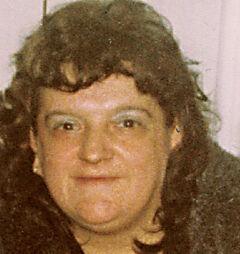
What if this were the beginning of your story? You are 16, the oldest of five children, and your father becomes so ill he cannot work to support your family. What would you do? For Buffalo, N.Y. native Penny Ellis, she felt the answer was simple: drop out of school and fib about your age to get a job. “We had no money coming in for food or to pay the bills,” Penny explained. “Since I was the oldest I felt it was my responsibility to help out.”
This can-do spirit has served Penny well throughout her life. She met her husband on a blind date and they raised five children before he passed away from cancer in 1996. When asked what career path she chose, Penny noted, “I was a jack of all trades. I’ve worked in a cafeteria, hotels and factories. When I retired, I had been an aide on a bus for handicapped children for five years. I really loved that.”
One thing Penny does not love, however, is testing her blood sugar three times a day. “I was diagnosed with diabetes in 1991, and I still don’t like the testing part—it hurts!” For Penny, diabetes runs in her family. “My mother and all her siblings had it, and now my brother and I do as well. One of our sisters has already passed away from diabetes complications.”
When she was first diagnosed, Penny said it took some time and patience to get her insulin dosage just right. “My doctors experimented with my doses and now my numbers are where they are supposed to be.”
Penny credits the American Diabetes Association with providing her with invaluable information about diabetes— information that not even her doctors had told her. “I was told that I could only administer my insulin shots in my stomach, but it was getting so bruised,” Penny said. “I found out through the Association that I could give myself shots in other areas.”
Because the American Diabetes Association has “really helped me manage my diabetes and words can’t express how much I appreciate that,” Penny has included a gift in her will to benefit the Association. “I know that nothing is done for free, and research takes money. So I hope that my gift will help the Association find a cure for diabetes once and for all.”
John Griffin | Medical Degree not Required—Membership Is for Everyone
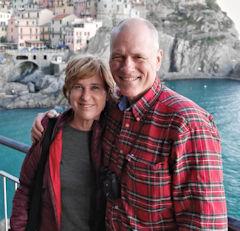
John Griffin, Managing Partner of Marek‚ Griffin & Knaupp‚ a Victoria‚ Texas law firm, always knew about diabetes. “But I never came into personal contact with the challenges of life with diabetes until the early 1990s when I met a UPS driver who had lost his job because of the disease.”
Griffin was shocked to discover that despite laws in place to protect people from being fired over this condition, organizations all over the country still discriminated against those who needed insulin to manage their diabetes. In addition, children with diabetes often experience discrimination in their schools.
“I asked a young lawyer in my office if he could find a nonprofit with resources to help me help this driver. He connected me with Dr. Ralph DeFronzo, a physician in San Antonio who volunteered with the American Diabetes Association.”
Together Griffin and DeFronzo successfully proved to a judge that the driver had been illegally discriminated against. While they worked on that case, DeFronzo asked Griffin why he wasn’t a member of the Association.
“I thought membership was just for doctors,” Griffin said. “But Ralph told me that they need lawyers too because of cases just like this one.”
That was the beginning of a lifelong partnership advocating for the rights of individuals with diabetes in the workplace. Griffin joined the Legal Advocacy Subcommittee and continues to serve there today.
In 1997, Griffin himself was diagnosed with diabetes, and it got personal. He likens this to adding a second engine to an aircraft. Now not only is he using his courtroom experience as a commercial lawyer to help people with diabetes, but he lives with diabetes, experiences the trials and tribulations of managing it, and feels connected with the other 34 million adults and kids living with diabetes.
With these two engines running, his work with the Association accelerated. Griffin joined the national board of directors in 2006, serving as chairman in 2011, and been a member of the Research Foundation Board of Directors. John is also a member of the Summit Circle—the Association’s recognition society for donors who remember us in their estate plans.
Barbara Hayes | Donor Makes Legacy Gift to the Association

Barbara Hayes has spent most of her life coping with diabetes—having been diagnosed with Type 1 when she was just 11.
“I had lost some weight, and I was frequently thirsty,” Barbara recalled. “I also had an infection that ultimately led my parents to take me to the pediatrician, who diagnosed my diabetes.”
Barbara remembers carrying glass syringes and boiling the needles she used for insulin injections. But, in those early days as a pre-teen with diabetes, one of her biggest concerns revolved around attending sleepovers with friends. “It was a big decision whether I could stay overnight at a friend’s house,” she said, “because it meant taking all my supplies with me and having to explain to everyone what diabetes was all about.”
After growing up in the Washington, D.C. area, Barbara went to Georgetown nursing school, where she met her late husband Arthur. She then received her Master’s degree in maternal and child health at New York University, and worked as a labor and delivery nurse while Arthur finished medical school. “My interaction with doctors and nurses because of my diabetes definitely influenced me to go into nursing.”
Barbara noted that she has regulated her diabetes well over the years. She successfully managed three high-risk pregnancies—“I had to monitor very carefully”—and credits the American Diabetes Association for helping to keep her healthy. “I have been reading Diabetes Forecast® since I was diagnosed,” she said. “Back then I enjoyed the letters from young people my age discussing their diabetes’ journeys. Now I really enjoy the recipes in the magazine.”
When recently considering her estate plans, Barbara, who had been regularly giving to the Association over the years, knew she wanted to do more. “Art and I had always supported causes that were important to us, even when he was in medical school and money was tight,” she noted. “While reviewing my estate plans after Art passed away, I realized that it would make more sense for me to focus my giving. So I’ve decided that a few favorite charities, including the American Diabetes Association, will receive a more substantial gift through my estate plans.
“The gift was simple to set up, and it has given me peace of mind to know that my legacy will help the Association in their search for a cure for diabetes."
Elaine Kozin | Giving for a Healthier Future
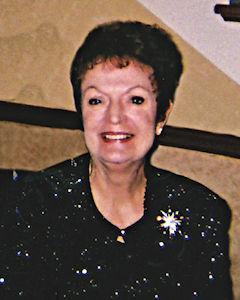
Elaine Kozin is no stranger to diabetes. In 1975, as a young wife and mother to two daughters, Elaine began losing weight and experiencing other changes in her health.
Her late husband convinced her to see her doctor. “I was surprised when I was diagnosed with Type 1 diabetes at age 30 because it did not run in my family,” Elaine said.
Elaine did not know anyone with diabetes when she was first diagnosed, so she turned to the American Diabetes Association for information and support. “I learned so much from reading the Association’s magazine, Forecast,” Elaine said. “And the Association hosted events at our hospital for people with diabetes. It was nice to have that support, because my family didn’t even want to believe that I had diabetes.”
Following the advice of her doctors and the information provided by the American Diabetes Association, Elaine has managed her diabetes over the years with a pragmatic approach. “I do what I was taught to do,” she said matter-of-factly. “I exercise by taking my dog on long walks or walking on my treadmill every day, I watch what I eat, and I check my blood sugar regularly. I also do volunteer work twice a week, and I’m in a bowling league. You simply have to do what is necessary to take care of yourself.”
When Elaine created her estate plans several years ago, she knew she wanted to make a lasting contribution to the American Diabetes Association. She decided to remember the Association in her plans.
“American Diabetes Association has now been in my plans for 25 years,” Elaine noted. “I know firsthand how diabetes affects people. The Association has done such good work over the years and has helped thousands of people, like me, live healthier lives.”
Now more than ever Elaine has a more personal stake in the work of the American Diabetes Association—her youngest daughter was recently diagnosed with Type 2 diabetes. “I hope my gift will help the Association find a cure for diabetes for future generations. There’s promising research going on, and I am glad my gift will help the Association in their fight against diabetes.”
Mike Michaels | Giving to Promote Diabetes Research
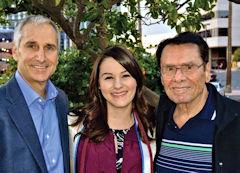
Mike Michaels came from humble beginnings in Brooklyn, and he found great success in his 25-year career as a financial advisor for Merrill Lynch in Phoenix. But perhaps his greatest success was as a loving father and grandfather to his family, and passionate supporter of the causes that were close to his heart, including the American Diabetes Association. That’s why it came as no surprise to his children that, when Mike passed away, he included a gift in his will to continue his support of the Association.
“When my father was diagnosed with Type 2 diabetes, that was a real wake-up call,” said Mike’s daughter Barbara Anderson. “He immediately turned to the American Diabetes Association for information and education.” Mike’s son Chuck added, “Dad learned to monitor his blood sugar and he became very interested in diabetes research. He even attended a few Association- sponsored conferences to learn about the newest developments in the search for a cure.”
Mike’s commitment to the American Diabetes Association included annual gifts during his lifetime, and his legacy gift came in his will. “As a financial advisor, Dad knew the importance of creating his estate plan and making tax-wise choices,” Barbara explained. “He wanted to be in control of how his estate was distributed, and not go to Uncle Sam.”
Chuck continued, “My dad was first and foremost his own man. He had invested well, lived modestly, and was very open with Barbara and me about his charitable intentions. We always knew one of his greatest passions was the American Diabetes Association.”
Barbara and Chuck, who both followed in their father’s footsteps with careers in finance, believe their father’s main reason for giving was to advance diabetes research. Barbara said, “Research was his focus. He wanted to help the American Diabetes Association get one step closer to a cure for diabetes.” Chuck added, “He knew diabetes could be a debilitating disease, and he felt it was important to help others who were also struggling. The gift he made through his will was his way of doing that.”
Jim Ryan | Giving to End Diabetes
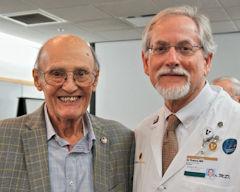
Jim Ryan has type 2 diabetes. His mother had diabetes, too. But it was his late wife’s battle with another disease that has led him to make a generous gift to further the mission of the American Diabetes Association with a focus on research.
“Marlene was diagnosed with pulmonary arterial hypertension, which is terminal,” Jim explained. “Thankfully, there was a drug available that extended her life for five years. It was research that made the medication possible.”
After 44 years together, Jim lost Marlene in August of 2016. Several weeks later, the retired insurance professional knew he needed to update his estate plans. “Marlene and I both had basic wills—she left everything to me and I left everything to her—so I knew that had to change,” Jim said. “I made a list of loved ones and what I wanted to do for them.” He also decided to make gifts to six health-related charities—including the American Diabetes Association—through his estate plans.
“Luckily I got my type 2 under control through losing some weight and taking medication. But diabetes shortens the lives of thousands of people,” said Jim. “I want my estate gifts to help charities focused on diseases that affect most Americans, and one out of 11 Americans has diabetes. That has to change.”
With the help of his advisors, Jim set up his estate gift to the Association so that 25% of the gift benefits diabetes research and 75% funds diabetes education. He even visited American Diabetes Association President of Medicine and Science, Dr. Alvin Powers, at Vanderbilt University to see firsthand the groundbreaking work funded by the Association. “It was amazing to meet the young scientists and see the impressive research they are doing. Their research would not be possible without gifts from supporters.”
“When you see the strides that have been made in diabetes research and education over the years, it’s phenomenal,” Jim added. “But conquering diabetes is still a monumental challenge. I am glad to know that my gift will help the American Diabetes Association advance research efforts and speed up the day we end the diabetes epidemic.”
Malinda Sanders | Giving to Bolster Diabetes Education
Malinda Sanders knows a thing or two about diabetes - not because she has the disease (though she is borderline diabetic), but because both of her parents had diabetes. “It was challenging because they had to eat different meals because their blood sugar needs were opposite—mom’s was high and dad’s was generally low,” Malinda recalled. “Back in the 1960s when they were first diagnosed, we didn’t have all the nutrition information we have now, so I would just try different recipes for them.”
Diabetes runs in Malinda’s family and she has seen firsthand some of the disease’s most devastating consequences. “My grandmother had neuropathy, my uncle had toes amputated and my mother went blind at age 55 and was bedridden the last year of her life,” Malinda said. “When she lost her sight and could no longer drive, mother became so angry. She felt like a prisoner.”
Malinda took care of her parents in their later years while continuing to work full-time as a customer service manager. Now retired, Malinda enjoys volunteering in her Texas community and helping others, especially her friends with diabetes. “When I started taking care of my parents, I learned a lot about diabetes from pamphlets from the American Diabetes Association. I encourage my friends to learn as much as they can about diabetes, too.”
Planning to Make a difference
When she made her estate plans, Malinda included a special gift to the American Diabetes Association—the Association is named as the beneficiary of a commercial annuity, a generous gift that will bypass the probate process.
Malinda believes diabetes education is the key to prevention. “I just want to help the Association so they can provide more educational programs, especially for young people. If you can make one person’s life better by educating them, then you’ve made a difference.”
Don and Arleen Wagner | Champions of Research Give to Stop Diabetes
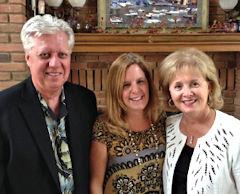
A little more than 30 years ago, Arleen and Don Wagner from Pennsylvania received news they were not prepared to hear. Their daughter, Suzie, was diagnosed with type 1 diabetes when she was 10 years old. The Wagners knew little about their daughter’s disease when they first heard the diagnosis, but immediately felt indebted to scientific advances.
“Research has made a huge difference in our Suzie’s life,” Arleen says with a smile. “When she came home from the hospital in the early 1980s, we were told that she was one of the first young people to leave there with her own blood-testing equipment. That was amazing to us and we really counted on that machine.”
Knowing that breakthroughs in diabetes research would bring forth new treatments and technology to help Suzie live healthily, the Wagners became involved with the American Diabetes Association on both local and national levels. They started helping out at fundraising events, which inspired Arleen to establish a successful golf tournament to support diabetes research.
Don has been serving at the national level on the Research Foundation Board of Directors since 2000 and served on the Association’s National Board of Directors from 2007 to 2008.
In addition to volunteering much of their time and talent to the Association, the Wagners give their financial support, including a gift through their retirement plan. “My husband and I are excited to give back because more than anything we want a cure for our Suzie and for everyone who suffers with this difficult disease,” Arleen says. “We want to fund research that could finally stop diabetes forever.”
Don adds, “We know without a doubt that research funded by the Association has improved the quality of Suzie’s life. We hope our gift helps researchers find an end to this disease.”
Phil Washer | Long History with Diabetes Leads to Gift
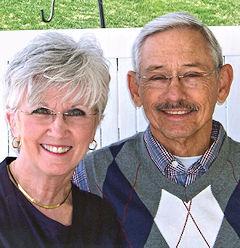
“With diabetes, there are no time outs, no vacations, no breaks. It’s 24/7,” Phil Washer says. He should know—he’s been living with type 1 diabetes for 62 years.
“I was diagnosed in 1953 when I was 6,” Phil continues. “At the time, everyone thought I was having trouble getting over the flu, but one doctor finally checked my blood sugar and it was way over 500. I was sent by ambulance to the hospital, where I spent 21 days.”
Phil remembers spending his childhood following a special diet (“my mother was very protective and made sure that I ate right”) and taking insulin shots (“my father gave me shots until I was 13 and could do it on my own”). With his family’s support, Phil took his diabetes in stride. His wife, Terri, continues that support by assisting him with managing his diabetes care and by always preparing meals that follow dietary guidelines designed for people with diabetes. Phil earned a degree in civil engineering in 1968 and a Master of Science degree in 1973, with a subsequent Master of Arts degree in 2005.
Phil has managed his diabetes well over the years. “In 1982 I received one of the first insulin pumps ever and it changed my life,” he says, but he has seen the disease’s devastating effects on other family members. “My middle brother had type 1 and died of a heart attack when he was just 32, and my older brother had type 2 and passed away at age 71,” Phil said. “Two of my first cousins with diabetes both died before age 40, and one of my two daughters was diagnosed with type 1 when she was 6—just like me.”
Because he and his family have been touched so deeply by diabetes, Phil decided to include a gift to the American Diabetes Association in his will. “For over 30 years the Association has been my source for the most current information and research about diabetes,” Phil explains. “I hope my gift will help the American Diabetes Association improve treatment techniques and find a cure so things will be better for my grandkids’ generation.”
